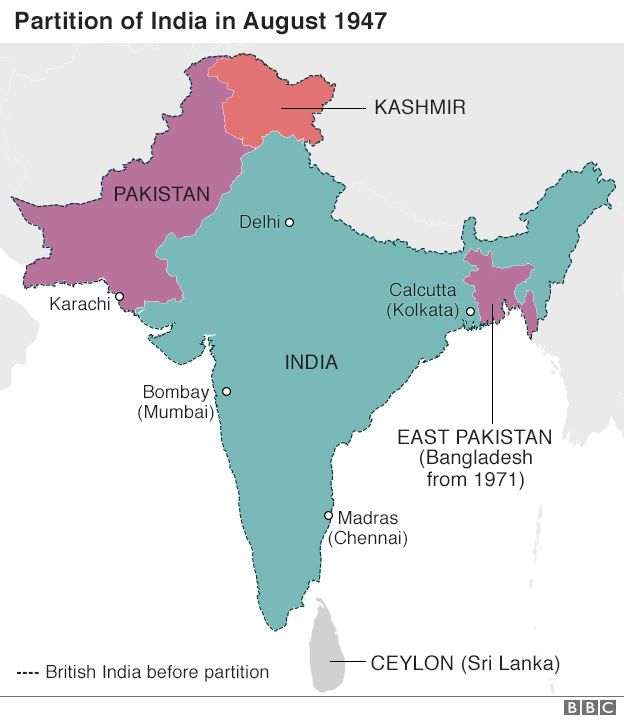The Blood Telegram: Nixon, Kissinger, and a Forgotten Genocide
-
www.wikidata.org/wiki/Q30078241
Online stores IndieBound Amazon Review sites Goodreads - Nonfiction book by Gary J. Bass
-
bt_excerpt-1595914985739.png
Excerpt from the "Blood Telegram" itself, April 6, 1971.Credit: US diplomatic staff, Dacca. CC-0 or public domain.partition-india-bbc-1595836315057.jpg
Partition of India, 1947.Credit: BBC. Fair use.Source: https://ichef.bbci.co.uk/news/624/cpsprodpb/16664/production/_97084719_partition_of_india_624.jpgsalt_lake_camp-1595923704663.jpg
"Salt Lake" refugee camp in Calcutta. Millions of refugees from the genocide overwhelmed India, a country already struggling with extreme poverty.Credit: Raghu Rai. Fair use.Source data licensing:
Data from Wikidata is available under Creative Commons CC-0.
lib.reviews is only a small part of a larger free culture movement. We are deeply grateful to all who contribute to this movement.Reviews
Please sign in or register to add your own review.
When the genocide came, they fought the messengersAfter a long, bloody history of colonial rule, Britain finally abandoned in the Indian subcontinent in 1947. Against significant opposition, the Brits negotiated the partition of India into India and Pakistan. This led to a refugee crisis, mass violence, and the deaths of between 200,000 and 2 million human beings. The resulting so-called “Muslim homeland” of Pakistan was not the nation we know today, but a country divided into West Pakistan and East Pakistan, with a whole lot of India between them:

Partition resulted in a bizarre post-colonial map, with a divided “Muslim homeland” (home to millions of non-Muslims) bordering India. Credit: BBC. Fair use.Less than 30 years later, the fiction of East Pakistan collapsed in genocide and war. After an election that would have shifted the balance of power to the Awami League, which sought independence for the East, Pakistan responded by abandoning its brief experiment with democracy and sent in its troops from the West. They unleashed atrocities that killed between 300,000 and 3 million people (often with weapons Pakistan had bought from the US). Hindus were singled out for extermination and expulsion, making this a genocide by every definition.
This spurred a refugee crisis that overwhelmed neighboring India, giving it cause and pretext to arm its Bengali neighbors and, ultimately, help them fight the Bangladesh Liberation War. The country of Bangladesh was born from the blood and the ashes. Brutal revenge killings against anyone who was seen as a collaborator with the Pakistani military followed.
The Blood Telegram by Gary J. Bass tells this story with special focus on the actions of US foreign policy decision-makers, chiefly Richard Nixon and Henry Kissinger. Nixon had developed a personal friendship with Pakistan’s dictator, Yahya Khan, and sought to preserve a strategic alliance with Pakistan, in part in order to use Yahya as a secret diplomatic channel in the planned opening of relations with the People’s Republic of China.
Bass uses the Nixon White House tapes, interviews, and countless historical documents to reconstruct a detailed picture of how the US government and its foreign policy apparatus responded to the genocide as it unfolded in East Pakistan.
A very clear picture emerges: Nixon and Kissinger did not care about the genocide, declined to put any pressure on Yahya to stop it, and bullied internal dissenters into silence. They refused to stop all pending arms transfers, and when the Bangladesh Liberation War started, they illegally used third countries (Iran, still ruled by the US-backed Shah, and Jordan) to funnel weapons to Pakistan. They tried to draw China more deeply into the conflict, and threatened India with an aircraft carrier.

“Salt Lake” refugee camp in Calcutta. Millions of refugees from the genocide overwhelmed India, a country already struggling with extreme poverty. (Credit: Raghu Rai. Fair use.)“Our government has failed”
The “Blood Telegram” of the title was sent by Archer Blood, then US Consul General in Dacca soon after the genocide started. The diplomatic staff were witnessing the mass killings firsthand, and after repeatedly warning their superiors about the unfolding crisis, they prepared a confidential dissent statement to express their deep concern with US foreign policy.

Excerpt from the “Blood Telegram” itself, April 6, 1971.Blood did not sign the statement, but he expressed his agreement with its contents. For his dissent, Nixon and Kissinger recalled him to the State Department’s personnel office back in DC.
Even in isolation, any defense of US foreign policy towards the 1971 genocide does not withstand scrutiny. There was no “pragmatism” here, because the US did not pragmatically push for political stability when it had the opportunity to, nor did it pragmatically choose one of the many alternatives for creating an opening with China.
Bass shows the role of emotion and prejudice in decision-making. Kissinger, who cultivates an image of a wise statesman and master of “realpolitik”, was ranting and raving about the Indians along with Nixon, and the two of them outdid each other with bizarre analogies (Yahya was “Lincoln”, the Indians were “Nazis”, Pakistan was being “raped” by India). The best that can be said about their actions is that they provided (inadequate) humanitarian aid to India in a “too little, too late” attempt to avert or delay war.
One fascinating aspect of this history is the role of the Soviet Union. An authoritarian regime, it allied itself with democratic India and supported the liberation of Bangladesh. In a complete reversal of Cold War stereotypes, here it was the Soviets who defended democracy and human rights, for their own reasons that were far more cool and pragmatic than Nixon’s emotional allegiance to a military dictatorship that pursued a course of self-destruction.
An incomplete portrait
The Blood Telegram is neither a full accounting of the events that led to the creation of Bangladesh, nor a comprehensive view of America’s foreign policy under Richard Nixon and Henry Kissinger. While Bass hints at other evils—the brutal escalation of the Vietnam War, the carpet-bombing of Cambodia, the installation of a murderous dictatorship in Chile—he focuses on his central thesis: different choices could have prevented or slowed the killing in East Pakistan.
Bass makes this case with commendable scholarly rigor, but an obsessive level of detail about the Nixon/Kissinger dynamic takes up space that could have been used to place these events in their larger context. In isolation, America’s complicity in the genocide in East Pakistan may seem like a historical abnormality. In the larger history of US foreign policy, which is littered with millions of avoidable deaths, it’s not the specific behavior of Nixon and Kissinger that was historically abnormal, but the vocal dissent represented by the Blood Telegram.
